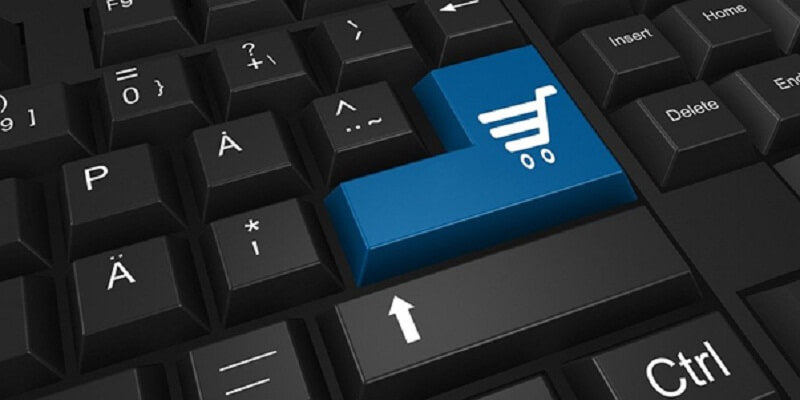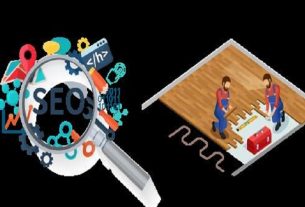Every online store wants to boost its sales. However, with so many marketing strategies, choosing the best ones for your business can be challenging. That’s why it’s crucial to implement digital performance marketing.
What is Performance Marketing?
This is when a performance marketing specialist helps analyze your business’s growth and success. This way, it’ll be easy to plan future goals by keeping what strategy works and eliminating what doesn’t.
Better still, you’ll understand better the interests of your target audience. In the end, your business becomes highly competitive and proactive.
This article contains the most effective eCommerce marketing strategies and tools. These ideas are straightforward to help you generate more repeat sales from the existing and new customer base.
Keep reading!
What Is Ecommerce Marketing?
According to a study, eCommerce is estimated to hit $6.5 trillion by the end of the year. Ecommerce marketing is a method of generating and driving traffic to your online store using promotional strategies. Its main agenda is to convert traffic to sales and retain customers after sales.
A complete eCommerce marketing strategy features on and off-site marketing tactics. Generally, the best marketing strategy should help you build brand awareness, generate customer loyalty, and boost online sales.
You can promote your eCommerce store using e-commerce and performance marketing tools to drive more sales for your goods or services.
Check out below an overview of top practical ideas to engage.
1. SEO
An online store’s search engine optimization (SEO) goal is to ensure you are in the top 10 pages of search engines. This way, you’ll drive more organic traffic to your website. Besides, page 1 will likely get more organic clicks than page 10.
So how can you use SEO?
- Perform quality keyword research to use the keywords in your page content, like blogs and product descriptions
- Create a user-friendly experience by optimizing your website layout
- Building backlinks from well-performing and trustworthy websites
For a beginner, SEO can be difficult. However, with knowledge and practice, you’ll be a pro in no time. Nonetheless, a good SEO approach enables your products to appear in several searches.
2. Influencer Marketing

An influencer is someone famous for particular knowledge and expertise. Using an influencer as a marketing strategy is an intelligent way to boost your sales.
This internet celebrity becomes a brand ambassador for your product or service. Ultimately, this helps your online store build awareness and reach new customers. An influencer is paid through cash, discounts, and free products, depending on your agreement.
According to Mediakix, about 80% of marketers use influencer marketing as their most effective strategy. Instagram is the best platform for your influencer marketing strategy to hit the roof. Still, other platforms like YouTube, Facebook, TikTok, and Snapchat are also generating sales.
Do you often see posts from your favorite influencer showing new products and services? Aside from doing a great job in driving potential clients to your store, influencer marketing also reduces the sales cycle. If you like what you see on an influencer, you’ll buy it from the store without a second thought!
3. PPC Campaigns
Pay-per-click (PPC) campaigns work for all businesses- large and small. Paid ads services are easy to scale and provide a good ROI (return on investment).
You’ll find PPC ads on the online ad space in search engines, websites, and social media platforms. But the most common platforms for PPCs are Google and Facebook.
These ads aim to target ready-to-buy customers, and they generate more sales than organic (unpaid) marketing. Additionally, PPC is excellent because you can choose your audience and the type of ad you want to show. Better still, you can retarget your PPC ads on people who’ve viewed previous ads, encouraging them to revisit your site for more purchases.
4. Upsell
Upselling involves selling a more expensive product than what the customer is considering. In eCommerce, upselling is more effective than getting a new customer for the premium product.
Usually, most customers are unaware there’s a premium product on sale or want more convincing on why the upgrade is better than what they want to choose.
When upselling, emphasize more on the difference and ask appropriately if the customer is interested in the upgrade.
Here are the two primary considerations when upselling for more sales:
- Ensure your upsells are related to the client’s consideration
- Be subtle about the expected price range of the customer
Your upgrade product must align with the customer’s original needs. Most importantly, the new product must be convincing why it’s better than the original for it to be worth the extra cost.
5. Promotional Text Message
Promotional text messaging is called SMS marketing. SMS marketing aims to inform customers of new offers, updates, and product information.
Ecommerce is the most prominent user SMS marketing. About 70% of customers agree that promotional text messages are an effective method of attracting attention.
You can use SMS marketing to;
- Recover abandoned carts
- Upsell and cross-sell
- Promote sales
- Announce special offers
- Get reviews
- Offer customer
6. Email Marketing
About 87% of marketers use email marketing as a strategy for distributing content. This shows that email marketing is an effective channel for making sales and encouraging repeat customers. The latest stats show that 87% of marketers use email marketing to distribute content.
Unlike Facebook and Instagram posts, email provides a more intimate interaction. You’ll notice that people are still more discreet with their emails than what’s on their social feeds. Besides, an email has adequate space to discuss everything that wouldn’t fit in one social media post.
Email marketing is a skill. However, there are basic ways to get started, like actively promoting your blog and newsletter to drive as many subscribers as possible.
7. Content Marketing
As they say, content is king! Therefore, it would be best for every eCommerce store to consider regular blogging. This helps create an effortless bond with customers and rank top in search engines. But if you are already blogging, ensure you include the blog on your online shop.
Furthermore, you can still benefit from content marketing other than blogging. For instance;
- Start a podcast and talk about your know-how or create a better community.
- Use guest posts on related websites and blogs to build backlinks and awareness. It also helps with your SEO approach.
- Create long-form guides that help your customers learn how to use your products more effectively.
8. Reward Loyal Customers
Retaining your existing customers is a cheaper way to boost your online sales. The best way to retain your customer base is by rewarding the loyal and big spenders. Who doesn’t love being rewarded?
Preferably, creating a loyalty program would be ideal to allow your customers to benefit. A loyalty program gives customers a bonus incentive once they buy and make referrals. You can also have automated reminders to ensure your customers remember what they need to do.
As an eCommerce store owner, you can decide how to reward your clients, how regular and the actions needing a reward.
9. Mobile Optimization

It’s not just having a responsive design but also ensuring the design considers a mobile device user from start to finish.
You might want to ensure the Add to Cart button is bigger on all mobile product pages. This will make it easy for the customer to tap on the button without zooming.
Also, ensure your images have a format that’s easier for mobile users to see and zoom in on product photos.
Final Word
How’s your performance marketing? In the end, the right marketing strategy will lead to excellent performance. This way, you reach potential customers, retain your existing client base and boost your sales.
With the best strategies above, rest assured of a successful eCommerce store. Remember, only use what works for you.



